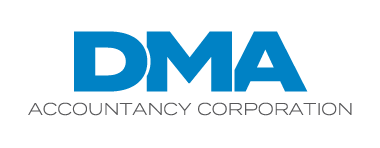The quest for skilled laborers in the manufacturing sector continues. Indeed, more than 600,000 manufacturing-related jobs remained open in December 2023, according to the U.S. Bureau of Labor Statistics. The Manufacturing Institute, an independent industry advocate, recently projected that nearly 4 million manufacturing jobs will need to be filled by 2030, with roughly only half of the demand expected to be met.
Where can manufacturers turn to fill open positions? One option is to expand your search pool beyond the candidates you typically consider. An added benefit is that, if you hire workers who fall into certain “targeted groups,” you may qualify for the Work Opportunity Tax Credit (WOTC). This often-overlooked federal tax credit can provide substantial tax savings.
Which workers qualify for the credit?
You can claim the WOTC for a particular worker only if certain criteria are met. Notably, the employee must be a member of one of the disadvantaged groups designated in the tax code. The list of targeted groups eligible for the WOTC includes:
- Qualified veterans (including certain unemployed and disabled veterans),
- Recipients of Temporary Assistance for Needy Families (TANF),
- Recipients of Supplemental Nutrition Assistance Program (SNAP) benefits,
- Designated community residents living in empowerment zones or rural renewal counties,
- Qualified vocational rehabilitation-referred individuals,
- Qualified ex-felons,
- Recipients of Supplemental Security Income (SSI), and
- Long-term unemployed individuals, designated by a local agency as an individual enduring a period of unemployment for at least 27 consecutive weeks during which they received state or federal unemployment wages.
Some individuals may be excluded from the WOTC even if they’re a member of a targeted group. This group includes rehired employees and relatives of the company’s owner or employees with a majority ownership in the company.
The WOTC is available for every worker that otherwise qualifies as a member of a designated group and is properly certified. There’s no limit on the number of workers that are eligible for the credit each year.
Note that the WOTC has expired and then been revived multiple times in the past by Congress. Generally, these extensions lasted only a year or two, but the latest reinstatement is for a five-year period. Currently, the WOTC is scheduled to expire after 2025.
What’s the credit worth?
For most targeted groups, the credit equals up to $2,400 per hire (40% of up to $6,000 in qualified first-year wages). To qualify for the full credit, an employee must work at least 400 hours during the year. If an employee works fewer than 400 hours but at least 120 hours in the year, the credit for the employee is reduced to 25% of the first $6,000 of wages, for a maximum $1,500 credit.
The WOTC can provide a substantial tax windfall. For example, if a manufacturer hires 10 targeted group workers in 2024 that each work more than 400 hours during the year, the credit can be worth up to $24,000.
In some cases, the credit can be even higher. For example, it can be as much as $9,600 for hiring certain disabled veterans. If a manufacturer hires 10 workers who qualify, the tax savings can be up to $96,000.
If you anticipate needing additional workers during the summer months, there’s a special variation of the WOTC. If you hire an individual age 16 or 17 who resides in an empowerment zone, enterprise community or renewal community, you can claim a credit equal to 25% of the worker’s first $3,000 of wages, up to a maximum credit of $750. The credit increases to 40% of first-year wages of up to $3,000 if the youth works 400 hours or more, for a maximum credit of $1,200 per worker.
Important: Only wages paid for services performed between May 1 and September 15 count for this summertime credit. And you can’t claim any credit for workers you employed last summer.
How can manufactures claim the credit?
Before you claim the WOTC for an eligible worker, you must identify the worker and verify eligibility by following these steps within 28 days of hire:
- Complete IRS Form 8850, “Pre-Screening Notice and Certification Request for the Work Opportunity Credit,”
- Complete Department of Labor (DOL) Forms ETA 9061 and ETA 9062 (plus an additional Self-Attestation ETA Form 9175, if required), and
- Submit the forms to the appropriate State Workforce Agency (SWA).
Assuming your state’s SWA approves the worker, the WOTC is claimed as part of the general business credit. Track the wages for the eligible worker throughout the year to determine the credit amount.
Turn to us for help
There’s little question that manufacturers need workers. They also need to take advantage of all the tax breaks available to them. The WOTC can help manufacturers with both needs. Contact us if you have questions regarding the WOTC.
© 2024


Recent Comments